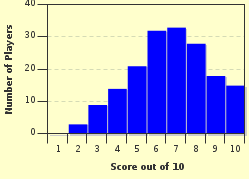Quiz Answer Key and Fun Facts
1. Which of these is not a condition imposed on drivers who have a G1 license?
2. What is the main difference (in terms of conditions and restrictions) between having a G2 license and a full G license?
3. If there are no signs or posted speed limits, what is the speed limit on roads in built-up areas (cities, towns, villages) in Ontario?
4. Which of these vehicles are Ontario motorists NOT required to stop for?
5. At a four-way stop intersection, which driver has the right-of-way?
6. If a pedestrian is crossing the road when they have a "Don't Walk" signal, that is their own problem and the driver does not have to stop.
7. Up to what Blood Alcohol Level may a driver have, while still legally operating his or her vehicle?
8. In Ontario, when is it okay to advance through an intersection even when you are facing a red light?
9. In which of these situations may you NOT be permitted to park your vehicle?
10. Which of these infractions will cost you the most demerit points?
Source: Author
guitargoddess
This quiz was reviewed by FunTrivia editor
Leau before going online.
Any errors found in FunTrivia content are routinely corrected through our feedback system.

